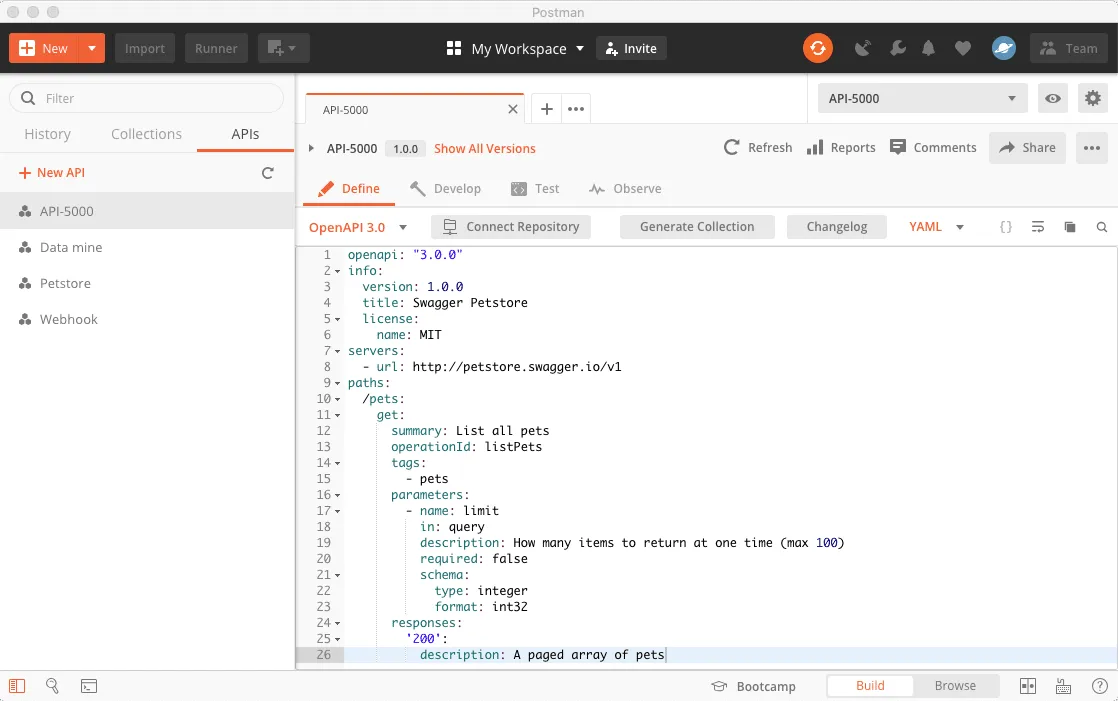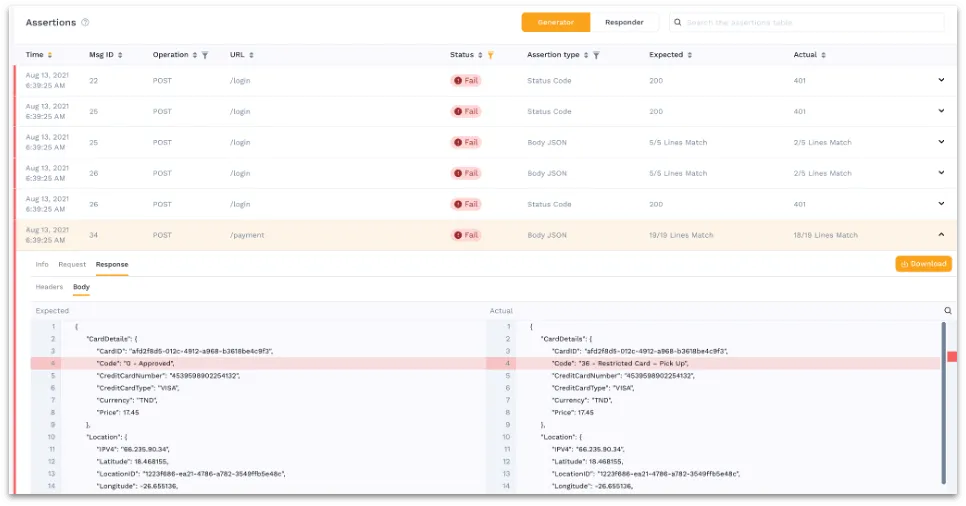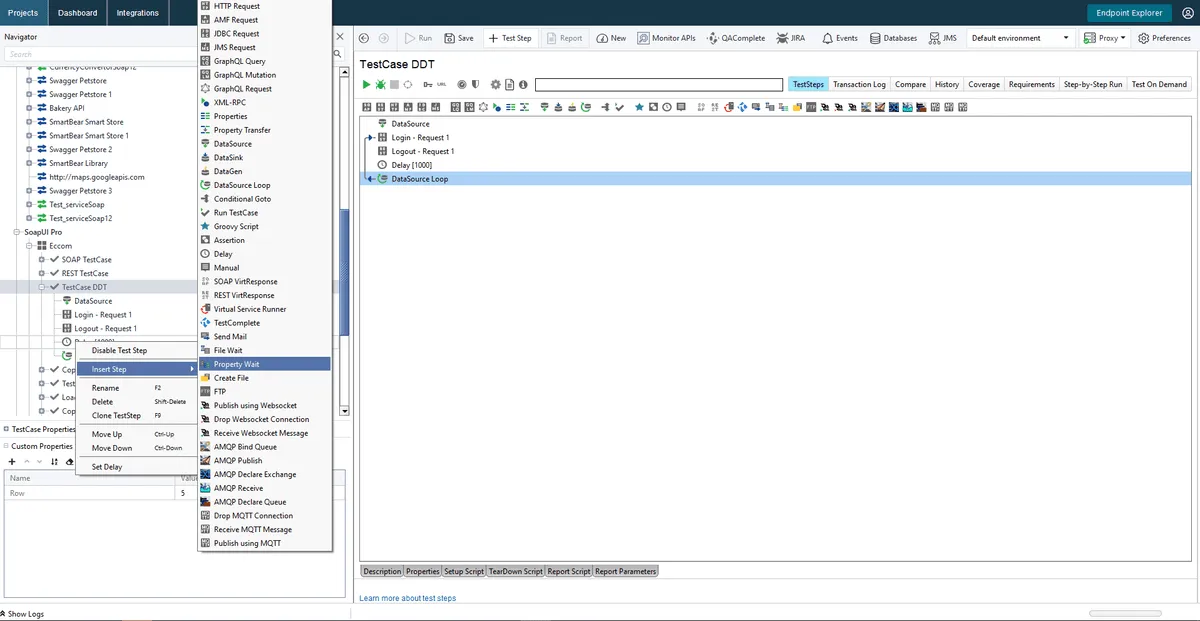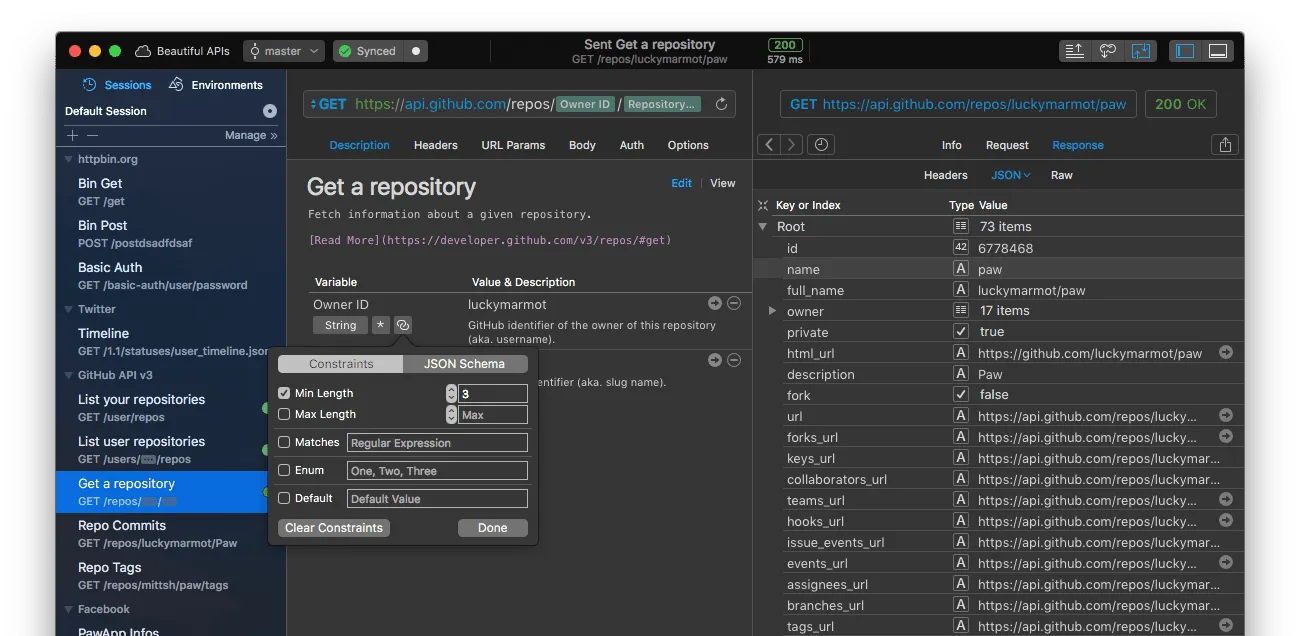Today’s software testing trends show the growing demand for more efficient and automation-oriented API testing. Many of the current test automation solutions focus on the UI, while most API-level testing is still done manually. As a result, testers are in need of easy-to-use, intelligent automation tools for testing APIs — improving their productivity and efficiency, while also reducing time-to-market.
Conversely, inefficient API testing can result in businesses not discovering issues with their cloud services in time — meaning customers are likely to be impacted by them. Plus, manually writing tests is time-intensive for developers, further increasing the need for tools that can help developers test their cloud services using real-world scenarios.
With this in mind, we’ll take a look at the Top 5 API testing tools available on the market today.
Postman

Postman is one of our Top 5 tools for API testing — and with good reason. Its collaboration platform has gathered more than 17 million developers working across 500,000 companies across the world, allowing them to streamline collaboration and simplify every step of API building.
One of Postman’s main advantages is its ease of use. It’s quick and painless to set up, and it’s also reasonably priced at just $12 for the bottom premium package. The platform is great for teams that need to quickly share APIs and easily test method calls. In fact, users can save call collections and share them with their colleagues. With a host of useful features, many web developers view it as an essential tool.
However, the reporting capabilities are somewhat lacking. Also, its cross-platform features are not ideal, as plenty of users have reported that it runs poorly on OSX devices.
Developers that need to do performance testing should know that Postman is better suited for functional testing, while tools like JMeter are a better fit for performance tests.
Plus, while its sharing capabilities within a single team are great, there’s a lot left to be desired when it comes to sharing with non-workspace users. The complex nature of the platform also means that some of the more advanced features are practically “hidden” if you’re not willing to work to get over the learning curve.
All things considered, Postman isn’t a bad choice for API testing. While the “Getting Started” guide provided by the platform isn’t as in-depth as we’d like, there’s plenty of information online that can help you master the tool.
It’s also an excellent way to quickly set up mock APIs, allowing developers to design and test on the fly using the platform’s mock servers. Within Postman you can make requests without a production API ready to go, however you’re on your own to provision mock data.
Above all else, its teamwork features are definitely the platform’s main draw. Creating teams and sharing data for better communication and integration is quite easy.
REST Assured
REST Assured is another Top 5 tool for API testing. However, it’s not a standalone tool per se. Rather, it’s a Java library you can install. If you want to use it, you need to include it as a library in your Java project.
On the one hand, there’s plenty of detailed REST Assured documentation that you can access through the tool’s Github repository. There, you’ll find an in-depth list of features with extremely specific explanations on how to do everything you want with this Java library. However, there’s no getting around the fact that this is a powerful, but not very user-friendly tool.
While the documentation is fairly detailed, it’s all found on one huge web page. A sprawling wall of text is far from the most user-friendly way to learn a new tool. Still, if you’ve got some Java coding skills, you’ll find managing and creating tests is a breeze with REST Assured, even though there’s no GUI to speak of. The library uses Gherkin syntax though, meaning tests are fairly easy to read even though they’re all in code.
Also, you organize your API tests as separate Java files. If you want to change a single test, you won’t need to open more than one Java file.
For people who know their way around Java, there’s no real need for a GUI. Tests can quickly be edited through an SSH terminal. Plus, collaboration with colleagues is quite simple, because you can easily maintain Java files through any decent SCM.
Most developers use REST Assured to perform functional testing on REST API services. Integrating with unit tests is also simple. However, performance testing isn’t supported out of the box. If you want to use REST Assured for this, you’ll need to develop your own framework.
Speedscale

Speedscale is one of the most recent additions to the API testing market, and also the one poised to be the most revolutionary. This startup was born out of a simple idea: making a tool that can ensure API updates in containerized development don’t break services or apps.
With so many connection points between different applications, ensuring quality without a lot of manual work is almost impossible. Speedscale is the solution for this, with scalable test automation that allows uninterrupted release velocity.
It enables developers to accelerate their release schedules by performing test automation with real traffic. Usually, developers would have to wait for a mistake to become apparent to users and then frantically work to fix it, but Speedscale allows them to see issues before the release.
The platform builds QA automation without any scripting required and runs traffic-based API tests for performance, integration, and chaos testing. While other tools require tedious scripting and observation, Speedscale allows developers to preview their app’s functionality under production load in mere seconds. You can use it to perform rapid tweaking and run isolated performance tests. It builds mocks automatically from API traffic, and shows the performance of an app in real-world conditions by simulating non-responsiveness, random latencies, and errors.
The platform uses agents that allow testers to listen to API traffic. After that, users can explore and filter tests and mocks that are generated based on this traffic. However, it’s important to note that Speedscale was designed for the testing of APIs deployed in Kubernetes environments.
SoapUI

Among open-source API testing tools, SoapUI is definitely one of the Top 5 API testing tools. Its functionalities are useful for all web service developers, with excellent support from its own development team that’s quick to jump on any user-reported bugs.
There’s a free, open-source version of SoapUI and a premium one. That being said, even the free version can be useful for creating efficient web service mocks without a single line of code — all you need to do is to point to the WSDL file. Still, this will be of limited use without the premium version, because most of today’s web services are REST and not SOAP, meaning they aren’t defined with a WSDL.
Apart from that, it’s quite powerful when it comes to complex test suites and simple mocks. Plus, you can use the Groovy script to write Java-ish code and manipulate responses and requests for your web services. You can even directly access a database and confirm the content if it’s been modified by a web service — an incredibly valuable tool for the testing and development of web services.
However, it’s not without its downsides — if you’re using the free version, there are still plenty of advanced features, but their documentation is incredibly poor. You’ll basically need to go through various forum posts to learn to use the more powerful options provided by the Groovy script functionality. You’ll likely need to resort to trial and error and piece a lot of it together yourself.
Also, there seem to be some issues with the memory usage of SoapUI — it can grow to the point of crashing the program. You can alleviate this somewhat by allocating more memory to the program on startup and tinkering with logging levels, but it’s still a significant stability issue with the software.
At the end of the day, SoapUI is a good choice if you want a simple mock service — or a complex one that’s not easy to use, and you’re ready to put time and energy into. However, if you do learn its ins and outs, SoapUI offers a lot of power and functionality for API testing.
Paw

Last but not least, Paw is also one of our Top 5 tools for API testing. It works extremely well with GraphQL, and its free tier offers more advanced options than most of its competitors, though it’s only compatible with Mac devices. It’s a full-fledged HTTP client for testing your APIs; with an extremely efficient interface that makes exporting API definitions, generating client code, inspecting server responses, and composing requests quite easy.
If you’re a macOS user, you’ll find that the likes of Postman or Insomnia don’t come close to Paw — especially in terms of GUI design and ease of use. One of the biggest issues with most other API testing tools is their cluttered UI (or in the case of REST Assured, a lack thereof). However, Paw manages to sidestep this problem by providing an aesthetically pleasing and extremely well-thought-out user interface. Their variable system was made with great care, as was the JS-based plugin system that’s incredibly easy to use.
Paw allows you to quickly organize requests, sort by different parameters, make groups, etc. It has great support for S3, Basic Auth, OAuth 1 and 2, and it can easily generate JWT tokens as well. Many developers appreciate the ease with which they can generate usable client code with Paw — you just need to import a cURL, modify the request, and PAW will help you generate the code for Python, Java, etc.
As we’ve mentioned, it’s quite easy to use — especially with a wide range of smart mouse and keyboard shortcuts. However, while its sole support for Mac devices means it’s quite focused and succinctly designed — this is also one of Paw’s biggest downsides.
The lack of support for Windows and Linux devices means that a lot of developers who prefer these OS will be left out of the Paw experience. Also, a big letdown is the lack of mock API features — meaning you’ll need another software from our list to do that. Finally, the extremely high per-user price also means it’s not the most affordable solution for all developers.